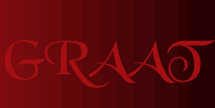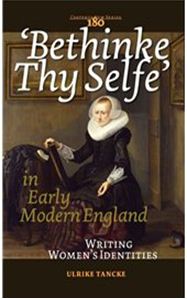
Editor-in-chief Trevor Harris
Book Review Editor Molly O'Brien Castro
![]()
Ulrike
Tancke, “Bethinke
Thy Selfe” in Early Modern England. Writing Women’s Identities
(Amsterdam & New York: Rodopi, 2010). $85, 276 pages,
ISBN: 9789042028081-Frédérique Fouassier, Université
François Rabelais, Tours.
In her groundbreaking study about the construction of the self in early modern women’s writing, Ulrike Tancke inscribes herself within the current scholarly interest in such literature, and questions the widely accepted notion of these texts as subversive discourses going against patriarchy. She reappraises the position of the early modern period vis-à-vis modernity and postmodernity: while postmodernists traditionally claim that early modernity contains the seeds of the fragmentation of the self they theorize about, Tancke shows that these women’s self-writings are above all based on compromise and balance. She concentrates on the dialectical aspect of the situation of these women, who can be seen both as transgressive and writing within the limits the patriarchal system imposes on them. Tancke’s aim is to read early modern women’s texts as both specifically feminine utterances and sites of inscription of patriarchal values, and to shed light on the interactions and/or tensions between individual choice and deviant experience on the one hand, and socio-cultural construction on the other. Far from trying to solve the ambiguities these texts contain, Tancke shows that contradictions must not be regarded as weaknesses but that, on the contrary, they constitute the very essence-and the very strength-of these texts. In their writings, women appear as able to compromise in order to gain power in a way overt confrontation would not have enabled them to do. Early modern women writers accept their contradictory status stemming from their stance of dutiful wives who prove boldly assertive through the mere act of writing in a society where a woman was supposed to be chaste, silent and obedient. These women manage to use the restraints imposed on them as an element of self-assertion. As a result, they construct their identity in the most paradoxical, ant yet coherent, way and position themselves as both bold and self-effaced, individual and representative of their kind, at the crossroads of notions of the Middle Ages and of the Enlightenment.
In order to make her point, Tancke studies a wide range of genres (drama, wills, conduct books, diaries, mother’s advice books, etc.) from a variety of authors, which she analyses in a detailed, thorough way. She also takes into account other primary, male sources from the period (humanist essays in particular, but also texts such as medical treatises) so as to better put in perspective the originality of the subject under study and the idiosyncrasies of each writer discussed. Special attention is paid to context in order to avoid the pitfall of anachronism. Tancke insists on the influence of Humanism, but also of the Medieval thought heritage and on the role played by socioeconomic circumstances in a society moving towards a proto-capitalist, urban market economy based on individual profit and private property. Tancke relies on a variety of secondary sources to shed light on the complexity of the question of the construction of self-identity in texts by early modern women. Nothing is ever taken for granted in her analysis and she confronts diverging, conflicting theories about social and cultural history and literary criticism. She takes into account a variety of perspectives in order to carry out her analysis: feminist theories (she refers to Butler, Gilbert and Gubar, Adrienne Rich, Luce Irigaray, Catherine Belsey), psychoanalytical and language theories (through Freud, Lacan, Kristeva, Derrida, Cixous, Chodorow, Melanie Klein, but also Barthes, Foucault, Laqueur, etc.),philosophy (Kierkegaard, and even Nietzsche in her conclusion). Thanks to her methodical approach, as well as her rich, detailed bibliography and her thorough index, Tancke unsettles all preconceived ideas about what it meant to be a woman in Renaissance England and asks the reader to reassess the notions of subversion, transgression and constraint. Tancke does not hesitate to unveil the limitations of some of the most authoritative works on the period (especially New Historicist and Cultural Materialist criticism, with the essential books by Stephen Greenblatt and Jonathan Dollimore), which she qualifies thanks to her study of the texts and of context.
The book falls into six distinct yet interrelated essays organized according to a thematic order. Chapter One, “Writing the Self: Identity through Authorship,” investigates the function of writing in relation to identity and examines the ways in which the authors show an awareness of the writing process as a way to voice their thoughts and feelings, i.e. to express their identities, which raises the question of authorial creativity and of the dependence on pre-existing sources. Chapter Two, “Self and Other: Identity and Relationality,” focuses on the interaction with others the act of writing supposes, especially given women’s roles as mothers, and on women’s sense of the precariousness of their selves and their position as writers. Chapter Three, “The Self under Threat: Self-annihilation, Self-abnegation, Self-loss and Death,” asks “how far the authors’ self-abnegation in their texts, expressed as fear of loss of self or even death, can be reconciled with the notion of identity formation through writing.” In Chapter Four, “The Struggle for Stability: Contradiction and Ambiguity,” the notion of self-loss is examined in a metaphorical sense and Tancke tries to find out to what extent the contradictions and ambiguities in women’s texts undermine their quest for coherent selfhood.” Stability is deliberately constructed and stands out as a (compromised) “strategy to counter the threat of self-loss resulting from restrictive patriarchal ideology, cultural constraints and material necessity.” Conversely, Chapter Five, “Private/Public Spaces: Boundaries, Polarities and Transgression,” shows how the various ways to conceptualise the private sphere as opposed to the public space generate further ambiguities. Finally, Chapter Six, “The Search for the ‘Golden Meane’: Rethinking Marginality and Power,” draws together the main lines of the preceding chapters, which prompts Tancke to suggest that the motif of the “Golden Meane” can provide the “vital clue to early modern women’s constitution of self,” because it links it to the discourses of moderation which prevailed at the time but reinterprets them in a way that can present “a workable and innovative paradigm of subjectivity.”
In her illuminating study, Tancke manages to show that accepting contradictions and balancing adherence to patriarchal norms with individual self-assertion was a far more effective strategy for early modern women writers than radical opposition, because it allowed them a degree of independent agency. This observation leads her to assert that women’s self-writing therefore questions the very validity of the notion of transgression and shows that an expression of self that consciously and radically sets itself apart from the dominant patriarchal discourse is not liberating at all, but rather has the opposite effect, namely loss of selfhood.
© 2010 Frédérique Fouassier & GRAAT
Senior
sub-editor: Hélène Tison
lntison@yahoo.fr
Webmaster Georges-Claude Guilbert

